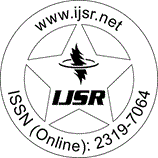Downloads: 123 | Views: 439
Research Paper | Information Technology | Malaysia | Volume 2 Issue 9, September 2013 | Popularity: 7.1 / 10
Teaching TRIZ Problem-Solving Methodology in Higher Education: A Review
Hajar Mat Jani
Abstract: TRIZ was invented in the former USSR in 1946 by Genrich Altshuller with his colleagues, and its main purpose at that time was to assist engineers to invent new products in a more efficient manner as oppose to the normal trial and error methodology. TRIZ is a Russian words and it means Theory of Inventive Problem Solving or TIPS. It was introduced based on the belief that there are universal principles of invention that are the foundation for creative innovations that help in creating and advancing technology. Even though TRIZ was initially developed to solve inventive problems in engineering-related problem domains, nowadays it has gained popularity in other fields such as in education, business, and other non-technology or non-scientific fields and domains. Several studies have been carried out in the past to investigate and analyze the benefits of teaching TRIZ to students at tertiary or higher level of education, and the results were very encouraging. In this paper, a review of several applications of TRIZ in higher education is performed, and based on the results of the review; a short summary of the findings is presented.
Keywords: Higher Education, Inventive Problem Solving, Structured Methodology, TRIZ Methodology
Edition: Volume 2 Issue 9, September 2013
Pages: 98 - 103
Please Disable the Pop-Up Blocker of Web Browser
Verification Code will appear in 2 Seconds ... Wait
